Use coupon code "KITTENLIFE" to get 20% OFF The Best Cat Collars Available here :
https://www.bemixpets.com
( Use coupon code "KITTENLIFE" to get 20% OFF )
Maine Coon Facebook Page :
https://www.facebook.com/MaineCoon.org/
Maine Coon Facebook Group:
https://www.facebook.com/groups/maine...
===============================================
British Shorthair Cat VS. Scottish Fold Cat.
You may not realize it, but you probably grew up with the British Shorthair. He is the clever feline of Puss in Boots and the grinning Cheshire Cat of Alice in Wonderland. The British Shorthair is native to England. With the rise of cat shows during the Victorian era, cat fanciers began to breed the cats to a particular standard and keep pedigrees for them. At the earliest cat shows, British Shorthairs were the only pedigreed cats exhibited. All others were simply described by coat type or color.
Two world wars devastated the breed, and few British Shorthairs remained after World War II. With the help of other breeds, the Shorthairs, as they are called in Britain, were revitalized. The American Cat Association recognized the British Shorthair in 1967, but the Cat Fanciers Association did not accept it until 1980. Now, all cat associations recognize the breed.
The creation of a new cat breed hinges on a natural genetic mutation that occurs unexpectedly in an otherwise ordinary cat. Such was the case with the Scottish Fold. Members of the breed today can all trace their heritage back to Susie, a white cat with unusual folded ears who earned her keep as a mouser in a barn in Scotland's Tayside region. Susie might have lived her life in obscurity had she not been noticed in 1961 by a shepherd named William Ross who had an interest in cats. When Susie had kittens with a local tom, Ross acquired one of them, a female he named Snooks.
In the natural way of things, Snooks had kittens, and one, a male was bred to a British Shorthair. Thus began the development of what was first known as "lop-eared cats," later as Scottish Folds, a nod to their country of origin and their defining characteristic.
Other breeders became involved, and it was determined that the gene mutation for the fold was dominant, meaning that if one parent passed on a gene for straight ears and the other a gene for folded ears, the resulting kitten would have folded ears. A gene for long hair was another gift Susie passed on to her descendants. The longhaired variety is known as a Highland Fold in some associations.
With his short, thick coat, round head and cheeks, big round eyes, and rounded body, the British Shorthair resembles nothing so much as a cuddly teddy bear. His body is compact but powerful with a broad chest, strong legs with rounded paws, and a thick tail with a rounded tip. The coat comes in just about any color or pattern you could wish for, including lilac, chocolate, black, white, pointed, tabby, and many more. The best-known color is blue or gray and the cats are sometimes referred to as British Blues. The short hair does not reach full physical maturity until he is 3 to 5 years old.
With the way their small ears fit like a cap over their rounded head, the Scottish Fold is often described as resembling an owl. The ears range in appearance from a single fold, bent forward about halfway up the ear, to a double fold, somewhat tighter, and the triple fold, lying tight to the head, which is desirable for show cats. Kittens are born with straight ears, which may or may not fold when they are about three weeks old. Wide-open eyes gaze out at the world with a sweet expression. The medium-size body is also rounded, completed by a medium to long tail that sometimes ends in a rounded tip.
A shorthaired Fold has a dense, plush coat with a soft texture. The longhaired variety has medium-long to long fur with britches, longer fur on the upper thighs, toe tufts, a plumed tail, and tufts of fur on the ears. They may also have a ruff around the neck. The Scottish Fold comes in a number of colors and patterns, including solid, tabby, tabby and white, bicolor, and particolor. Eye color depends on coat color. For instance, white and bicolor cats can have blue eyes or odd eyes, where each eye is a different color.
=========================
Copyright Disclaimer:
We respect the copyright interests of the individual owners in the video and don't claim to own the original clips.
However, under Section 107 of the Copyright Act 1976, allowance is made for "fair use" for purposes such as criticism, comment, news reporting, teaching, scholarship, and research. Fair use is a use permitted by copyright statute that might otherwise be infringing. The recent amendments to the Copyright Act of 1976 pertain to music. "Fair use" remains in force for film and video.
https://www.bemixpets.com
( Use coupon code "KITTENLIFE" to get 20% OFF )
Maine Coon Facebook Page :
https://www.facebook.com/MaineCoon.org/
Maine Coon Facebook Group:
https://www.facebook.com/groups/maine...
===============================================
British Shorthair Cat VS. Scottish Fold Cat.
You may not realize it, but you probably grew up with the British Shorthair. He is the clever feline of Puss in Boots and the grinning Cheshire Cat of Alice in Wonderland. The British Shorthair is native to England. With the rise of cat shows during the Victorian era, cat fanciers began to breed the cats to a particular standard and keep pedigrees for them. At the earliest cat shows, British Shorthairs were the only pedigreed cats exhibited. All others were simply described by coat type or color.
Two world wars devastated the breed, and few British Shorthairs remained after World War II. With the help of other breeds, the Shorthairs, as they are called in Britain, were revitalized. The American Cat Association recognized the British Shorthair in 1967, but the Cat Fanciers Association did not accept it until 1980. Now, all cat associations recognize the breed.
The creation of a new cat breed hinges on a natural genetic mutation that occurs unexpectedly in an otherwise ordinary cat. Such was the case with the Scottish Fold. Members of the breed today can all trace their heritage back to Susie, a white cat with unusual folded ears who earned her keep as a mouser in a barn in Scotland's Tayside region. Susie might have lived her life in obscurity had she not been noticed in 1961 by a shepherd named William Ross who had an interest in cats. When Susie had kittens with a local tom, Ross acquired one of them, a female he named Snooks.
In the natural way of things, Snooks had kittens, and one, a male was bred to a British Shorthair. Thus began the development of what was first known as "lop-eared cats," later as Scottish Folds, a nod to their country of origin and their defining characteristic.
Other breeders became involved, and it was determined that the gene mutation for the fold was dominant, meaning that if one parent passed on a gene for straight ears and the other a gene for folded ears, the resulting kitten would have folded ears. A gene for long hair was another gift Susie passed on to her descendants. The longhaired variety is known as a Highland Fold in some associations.
With his short, thick coat, round head and cheeks, big round eyes, and rounded body, the British Shorthair resembles nothing so much as a cuddly teddy bear. His body is compact but powerful with a broad chest, strong legs with rounded paws, and a thick tail with a rounded tip. The coat comes in just about any color or pattern you could wish for, including lilac, chocolate, black, white, pointed, tabby, and many more. The best-known color is blue or gray and the cats are sometimes referred to as British Blues. The short hair does not reach full physical maturity until he is 3 to 5 years old.
With the way their small ears fit like a cap over their rounded head, the Scottish Fold is often described as resembling an owl. The ears range in appearance from a single fold, bent forward about halfway up the ear, to a double fold, somewhat tighter, and the triple fold, lying tight to the head, which is desirable for show cats. Kittens are born with straight ears, which may or may not fold when they are about three weeks old. Wide-open eyes gaze out at the world with a sweet expression. The medium-size body is also rounded, completed by a medium to long tail that sometimes ends in a rounded tip.
A shorthaired Fold has a dense, plush coat with a soft texture. The longhaired variety has medium-long to long fur with britches, longer fur on the upper thighs, toe tufts, a plumed tail, and tufts of fur on the ears. They may also have a ruff around the neck. The Scottish Fold comes in a number of colors and patterns, including solid, tabby, tabby and white, bicolor, and particolor. Eye color depends on coat color. For instance, white and bicolor cats can have blue eyes or odd eyes, where each eye is a different color.
=========================
Copyright Disclaimer:
We respect the copyright interests of the individual owners in the video and don't claim to own the original clips.
However, under Section 107 of the Copyright Act 1976, allowance is made for "fair use" for purposes such as criticism, comment, news reporting, teaching, scholarship, and research. Fair use is a use permitted by copyright statute that might otherwise be infringing. The recent amendments to the Copyright Act of 1976 pertain to music. "Fair use" remains in force for film and video.
- Catégories
- Chats de Race British Shorthair
- Mots-clés
- british shorthair, scottish fold, scottish fold vs british shorthair








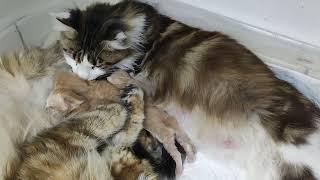
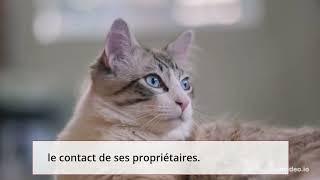
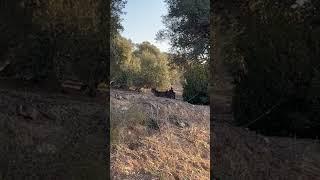
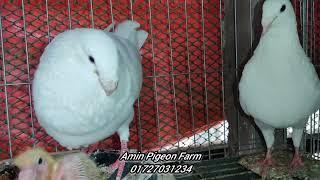
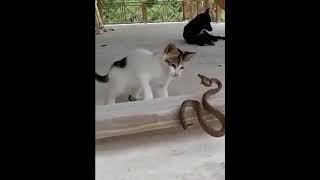


Commentaires